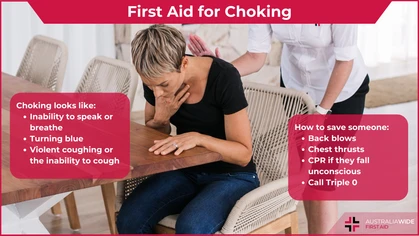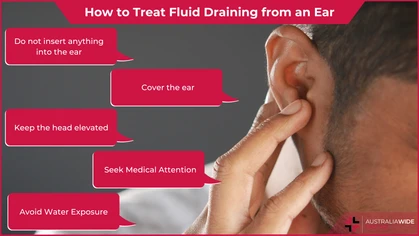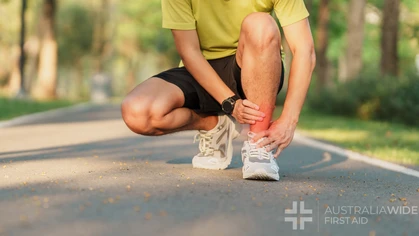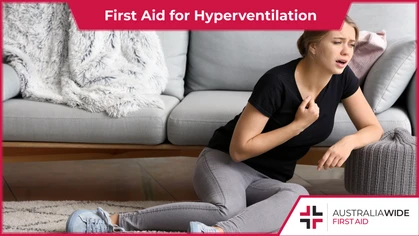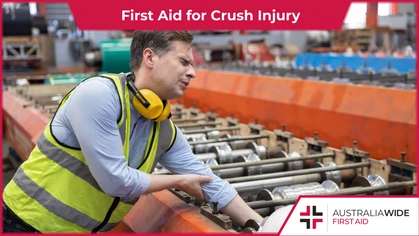First Aid for Constipation

How-To
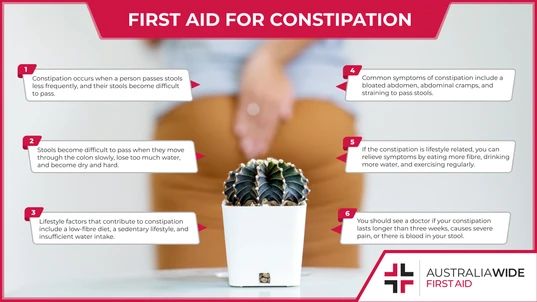
Constipation occurs when a person passes stools less frequently, and their stools become difficult to pass. It is important to know first aid for constipation, as chronic constipation can either lead to, or be a symptom of, ongoing health complications.
Constipation occurs when a person passes stools less frequently, and their stools become difficult to pass. Constipation typically occurs when a person changes their diet or routine, or they consume an inadequate amount of fibre. It is important to know first aid for constipation, as chronic constipation can either lead to, or be a symptom of, ongoing health complications.What is Constipation?
The technical definition of constipation is when a person has less than three bowel movements per week. However, bowl movements are unique to each person, and some people may only have one to two bowel movements per week as their standard pattern. As such, a person can be considered constipated if they begin passing stools less frequently, and their stools subsequently become dry, hard, and painful or difficult to pass.What Causes Constipation?
Constipation occurs when stools move too slowly through the large intestine. This results in too much water being absorbed from the stool, which becomes dry, hard, and difficult to pass. Many lifestyle factors can contribute to constipation, including a low-fibre diet, insufficient water, and a lack of regular exercise.Signs and Symptoms of Constipation
- Bloated abdomen
- Abdominal cramps
- Needing to pass stools less often than usual
- Hard, dry stools that may be difficult to pass
- Straining to pass stools
- Needing to sit on the toilet for much longer than usual when trying to have a bowel movement
- After having a bowel movement, feeling like the bowel hasn't fully emptied
First Aid for Constipation
First aid for constipation depends on the cause. If the constipation is related to lifestyle factors, you can relieve symptoms by:- Dietary changes: Specifically, increasing the amount of fibre in your daily diet. Fibre increases the weight and size of stools, which makes them easier to pass. Good sources of fibre include wholegrain cereals, fruits, vegetables, and legumes
- More fluids: Like fibre, liquids help soften and plump out stools. It is generally recommended that people with recurring constipation drink 6 to 8 glasses of water per day. However, they should avoid diuretic drinks like tea, coffee, and alcohol, which make the kidneys pass out more urine
- Exercise: Regular exercise helps improve bowel motility. Bowel motility refers to the muscular contractions that mix and propel contents through the gastrointestinal tract. It is recommended that people exercise for at least 30 minutes every day
When to See a Doctor
You should see a doctor if your constipation lasts longer than three weeks, causes severe pain, or there is blood in your stool. The constipation might relate to factors that are outside of your control, such as prescription medication, old age, or an underlying medical problem like an abdominal hernia or irritable bowel syndrome. It is important to see a doctor if your symptoms get worse instead of better, as complications of chronic constipation include rectal prolapse, and faecal and urinary incontinence. The below video goes into even greater detail about first aid for constipation:Recommended First Aid Courses
For more information on how to prevent, identify, and manage symptoms for constipation, head to a first aid course near you. The following first aid courses look at constipation:
Originally published at
https://www.australiawidefirstaid.com.au/resources/first-aid-for-constipation
as part of the Australia Wide First Aid Articles Library
